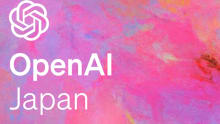Here is how to create a great employee experience with People Analytics

Recently, while furnishing our new office, we thought we could use some fun in the midst of all that functionality. We polled our team on what they'd like best: a foosball table, or bean bags.
Despite weeks of bravado among the guys about being foosball heroes, the results of the poll were overwhelmingly in favor of bean bags.
Beanbags, foosball tables, free beer, and other trappings are quintessentially associated with the employee experience. But this episode wasn't about that for me.
Without data, we would have gone with the foosball table just because everyone was talking about it.
While this was a small, relatively inconsequential decision, this battle between 'gut-feel' and analysis occurs every day. Across people management decisions, who to hire, who to promote, what skills to develop, how to engage our teams, how to rate performance...
More often than not, 'gut-feel' wins. Thankfully, that has been changing.
People Analytics: "Here with a vengeance"
Josh Bersin, at Bersin by Deloitte, describes a surge in interest and application of people analytics in addressing the employee experience.
His team recently found that People Data was the top human capital trend globally. The study also reports that 69% of enterprises larger than 10,000 employees now have a people analytics function.
On LinkedIn, the number of professionals with "People Analytics" listed as a skill has increased by >60 percent over the past 12 months.
This is less surprising than it might first seem. Studies have shown that the return on investment on people analytics can be as high as $13.01 for every dollar spent.
That's almost better than printing money.
Employee experience and the customer experience
For years, companies have been religiously collecting and analyzing customer data to find the best way to attract and retain their spend, as well as to increase the amount spent on their products.
Marketing departments deeply research various customer personas, identifying demographics, psychographics, and behavior patterns, all too carefully craft their messages through the media which will be best received, and in a form that will be best accepted.
Analytical tools are used to map out each customer's buying journey, to remove unnecessary friction and to find new opportunities to delight, improving word-of-mouth referrals and share of wallet.
Human resource departments are starting to embrace similar techniques to attract and retain talent, develop them, increase their productivity, manage change initiatives, and strengthen team dynamics.
This shift and its impact on the human resource function promises to be as significant as the data revolution has been for the marketing function. The Harvard Business Review identified big data as the next "management revolution".
With increases in the velocity of data transfer, the volume of data collected, and the variety of data types collected, marketers have been able to orchestrate highly personalized customer experiences.
The application of such analytical techniques to HR would allow companies to create extremely targeted and personalized employee experiences.
With disciplined data collection and analytics, an evidence-based approach to building and calibrating your company's service-profit chain can be taken.
The way technology tracks Operational Data (“O-Data”) for customers in our Customer Relationship Management (CRM) systems is very similar to how we track 'O' Data for employees in our HR Information Systems (HRIS).
However, when it comes to Experience Data (“X-Data”), it would be helpful to also have a single source of truth at a high enough level of frequency to build from for employees. Currently, such data is captured infrequently and ad hoc, making any kind of attribution analysis tenuous at best.
Technology now makes that concern a thing of the past.
Technology: enabling people analytics
There is no single 'right' employee experience. There is only the right employee experience for your specific company situation.
To establish what is right for your company, first you need to compile data to track and analyze the status quo, to create a set of “employee personas” and map out their different journeys through your organization.
Second, you need to find the high and low points of those journeys. These may be part of the employee’s lifecycle or may be related to the company’s business cycle. The hypothesis would be that these peak and trough moments create a disproportionate impact on the employee’s experience with your company. And therefore greatly impacts their productivity and loyalty.
Finally, you’ll need to test that hypothesis by correlating your data against business data. This doesn’t need to require a PhD in statistics to do, as having a good gauge of the directionality of interventions would be far better than having none.
What it does require is rapid experimentation using bite-sized interventions, and monitoring the changes (if any) to your data.
There are a few ways in which technology can help with such analytics.
One way is “active” monitoring, done through pulse surveys, 360 performance feedback, live conversations, team meetings, town halls, and any other means of interaction that requires the employee to participate in something.
Another the complementary way is “passive” monitoring, where the employees go about business as usual and you collect crumbs of data from their behavior to make inferences. One method would be organization analysis, observing patterns in, for example, email meta-data, which has yielded interesting insights on what makes a good salesperson.
Conclusion
By combining technology and analytics, methodologies that have been advanced in customer experience fields already, human resource professionals can strategically improve the employee experience in ways that have real business impact.















